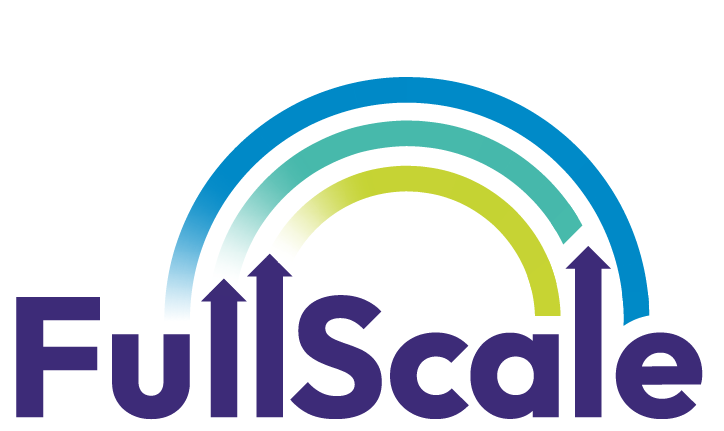Over the past decade, schools and systems have made significant progress expanding students’ access to digital learning. But that momentum is now at risk.
Federal leadership has receded. The U.S. Department of Education’s Office of Educational Technology has been shuttered. Pandemic-era funding has ended, and the future of critical national access programs like E-Rate remains uncertain.
In this leadership vacuum, schools and systems will increasingly turn to state education agencies (SEAs) for leadership and guidance.
SEA leaders have long played a pivotal role in expanding access and opportunity, guiding systems, aligning investments, and helping connect students to the tools and instruction they need to thrive. As they take on even more leadership, The Learning Accelerator (TLA) has resources to sustain and strengthen SEA leaders’ progress.
Getting started can feel daunting, but there are three actionable strategies — supported by real-world examples and openly available tools — that SEA leaders can adapt to meet the moment as well as sustain and advance digital access and opportunity.
Strategy One: Provide Tools That Help Local Leaders Turn Vision into Action
Many teachers, schools, and systems share a strong vision for instruction that leverages technology to deepen, extend, and accelerate student learning. However, visions are only as powerful as the systems built to realize them. While many school systems are deeply committed to expanding student access to technology-enabled learning, they often lack the structured support needed to move from vision to implementation.
SEA leaders can strengthen local capacity by providing aligned, flexible resources that help local leaders assess their current conditions, design actionable strategies, and integrate digital access and opportunity into their instructional planning.
The goal is not to dictate one-size-fits-all solutions, but to offer practical frameworks that guide local, student-centered innovation.
Across its learning networks, TLA has supported schools and systems in driving both systems change and instructional improvement. Whether working to strengthen edtech infrastructure, exploring new instructional models, or integrating emerging technologies like AI, these networks are grounded in a common approach: providing leaders with actionable tools that help them cut through the noise, access and implement best practices, and monitor progress over time.
From our signature Strategy Labs to the School Teams AI Collaborative, participating districts and schools have used self-assessments, collaborative planning frameworks, and improvement guides to take meaningful action aligned to their local context. While each initiative is different, the resources and routines they rely on are consistent and can be easily replicated.
SEA leaders do not need to invent these tools, but can instead draw from and adapt existing resources, such as:
- Assemble an EdTech Leadership Team to guide schools and systems in building the cross-functional teams necessary to lead and sustain digital learning improvements.
- EdTech Systems Self-Assessment to help systems understand their needs related to digital access, infrastructure, and instructional use of technology.
- Continuous Improvement Guide to support local leaders in setting goals, testing strategies, and iterating toward stronger systems and practices.
- Digital Equity Guide to anchor district planning efforts around a holistic definition of digital access and opportunity rooted in powerful student-centered pedagogy.
With strategic supports in place, local leaders can move beyond isolated initiatives and toward sustainable systems that enable powerful learning opportunities for all students.
Strategy Two: Build Capacity for Research and Data Use That Drives Learning
Strong systems are built on learning. To sustain and expand digital opportunity, SEA leaders must help local systems leaders embed measurement into every stage of their work as a tool for continuous improvement.
Building capacity for research and measurement means helping system leaders ask the right questions, design practical evaluations, and make informed adjustments based on evidence. This means creating infrastructure for local leaders and their teams to learn in real-time, rather than waiting for lagging indicators to tell an incomplete story.
TLA’s Deepening Our Understanding of High-Quality Virtual and Hybrid Learning report highlights this approach in action. Studying six diverse school models, TLA is capturing both student-level outcomes and the systemic conditions that support meaningful success. This work offers SEA leaders a roadmap for embedding measurement and evidence-building into digital access and instructional initiatives.
In building the systems and capacity needed for more responsive research and measurement, SEA leaders can leverage TLA resources, including:
- Building Research and Measurement Capacity within EdTech Systems to help school systems design strategies that capture various levels of data to understand technology implementation, teacher adoption, and student outcomes.
- Data Advocacy Guide to equip system leaders to use evidence for advocacy, improvement, and strategic decision-making.
- Research & Measurement Guide to offer practical frameworks for designing equity-centered evaluations that drive learning.
With support, systems can make data a central and empowering force in their efforts to expand digital access and opportunities.
Strategy Three: Create Spaces for Shared Learning and Collaboration
No school system or leader should have to navigate this work alone. State-level leadership is critical for creating the spaces where local teams can learn together, troubleshoot shared challenges, and move faster through collective action.
SEA-led learning networks and collaboratives offer a powerful mechanism for surfacing needs, aligning strategies, and scaling promising practices across regions. By bringing teams together around shared goals and challenges, SEAs can accelerate improvement while honoring local innovation and context.
Massachusetts offers a powerful example. For two years, the Department of Elementary and Secondary Education convened a statewide network of school- and system-level edtech leaders, supporting cross-functional collaboration through structured self-assessments, facilitated planning sessions, and shared frameworks. Working together, participants were able to reflect on local needs, align strategies, and build greater coherence across their systems, moving digital access and opportunity from isolated efforts to statewide momentum.
To replicate this model, SEA leaders might consider using:
- Driving EdTech Systems: Engaging Stakeholders to support local leaders in designing systems for stakeholder engagement
- Setting an Innovation Focal Point to help teams coalesce around shared problems of practice.
- System-Wide Definition of Personalized Learning to build coherence around instructional goals.
- Collaborative Theory of Change to guide teams in mapping drivers and outcomes for systemic change.
By prioritizing collective learning, SEA leaders can unlock the full potential within their state’s communities to advance digital access and opportunity.
Lead What Comes Next
The role of state leaders in advancing digital access and opportunity is more critical than ever.
By equipping local leaders with structured tools, building systems for evidence-driven learning, and creating spaces for shared reflection and strategy, SEA leaders can ensure that their students’ digital learning opportunities not only survive but thrive.





